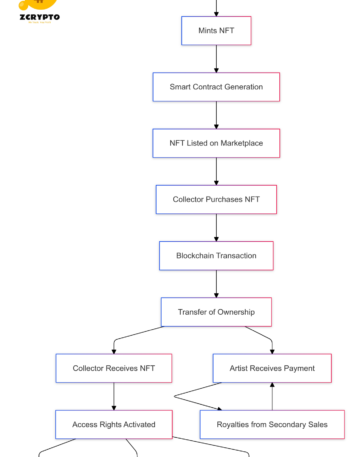In the intricate world of distribution, managing the flow of goods from suppliers to customers is more than just a logistical challenge; it’s a financial and operational puzzle that requires precision and strategy. Distribution management is the backbone of any successful distribution business, ensuring that products reach the right place at the right time while maintaining profitability and customer satisfaction. This article will delve into the critical aspects of mastering distribution management, highlighting key financial management tools, strategies, and best practices that can transform your business.
- How Common Law Systems Boost Financial Development and Investment Opportunities
- Mastering the Fundamentals of Finance and Investment: A Comprehensive Guide
- How to Trade the Evening Star Pattern: A Powerful Indicator for Predicting Bearish Reversals in Finance and Investment
- Mastering the Fair Labor Standards Act: A Comprehensive Guide for Finance, Business, and Investment Employers
- How to Use the Electronic Federal Tax Payment System (EFTPS) for Secure and Convenient Tax Payments
Defining Financial Management for Distribution Businesses
Financial management in distribution businesses is multifaceted and crucial. It involves several key responsibilities, including managing cash flow and working capital, financial forecasting and budgeting, optimizing inventory levels, and assessing risks.
Bạn đang xem: Mastering Distribution Management: Boost Efficiency, Profitability, and Customer Satisfaction
-
Cash Flow Management: One of the most significant challenges distributors face is managing the timing gap between paying suppliers and receiving payments from customers. This gap can strain cash flow if not managed with financial discipline. Tools like cash flow forecasting help anticipate these gaps and ensure that the business remains solvent.
-
Financial Tools and Strategies: Distributors rely on various financial tools such as forecasting models, working capital optimization techniques, and risk mitigation strategies to navigate these challenges. For instance, forecasting models help predict future sales and expenses accurately, while working capital optimization strategies like factoring or vendor financing can smooth out cash flow fluctuations.
Essential Financial Management Tools and Strategies
Effective financial management in distribution involves several critical tools and strategies.
-
Financial Planning and Budgeting: Comprehensive forecasts and budgets are essential for minimizing surprises and ensuring that necessary financing is arranged. Key metrics to predict include sales, operational expenditures, inventory costs, freight/logistics outlays, marketing budgets, payroll, and taxes. A well-crafted budget helps calibrate stock levels accurately.
-
Working Capital Optimization: Strategies such as factoring or vendor financing can provide the necessary working capital to bridge the gap between supplier payments and customer receipts. This ensures that the business has enough liquidity to operate smoothly.
-
Risk Mitigation: Distributors must implement robust risk mitigation strategies to protect against disruptions such as supply chain issues or market fluctuations. Monitoring key metrics and optimizing inventory levels are crucial in this regard.
-
Cost Control Measures: Effective cost control involves assessing major expenditure areas like labor costs, facilities expenses, logistics costs, sales expenses, and potential high-impact moves such as renegotiating supplier rates or optimizing warehouse layouts.
Utilizing Financial Forecasting and Budgeting
Xem thêm : Understanding the Error Term: What It Means for Your Regression Models in Finance and Investment
Financial forecasting plays a pivotal role in estimating future cash positions based on projected sales and expenses. Accurate forecasts enable distributors to arrange necessary financing and calibrate stock levels effectively.
-
Forecasting Models: These models help predict future financial outcomes by analyzing historical data and current market trends. This predictive capability is invaluable for making informed decisions about inventory levels and operational expenditures.
-
Budgeting Procedures: Comprehensive budgeting involves predicting all operational expenditures including inventory costs, freight/logistics outlays, marketing budgets, payroll expenses, and taxes. This detailed approach minimizes surprises and facilitates smoother operations.
-
Impact on Operations: Accurate forecasting and budgeting ensure that operations run smoothly without unexpected financial shocks. This stability enhances operational efficiency and customer satisfaction.
Best Practices and Tips for Effective Financial Management
Mastering distribution management requires more than just tools; it demands disciplined financial stewardship and the adoption of modern systems.
-
Disciplined Financial Stewardship: Prudent leadership is essential in managing costs effectively, monitoring key metrics regularly, and optimizing inventory levels. This disciplined approach ensures long-term financial health.
-
Modern Systems and Tools: Combining wise financial stewardship with modern systems leveraging artificial intelligence (AI) and sophisticated analytics positions businesses to thrive. These technologies offer real-time insights into operational efficiencies and optimization opportunities.
-
Data Analytics: Data analytics is crucial for uncovering optimization opportunities within operations and the supply chain. It facilitates smarter decisions on inventory volumes, sales strategies, and customer profitability by providing detailed insights into consumer behavior and market trends.
Case Studies and Comparative Statistics
Real-world examples illustrate the impact of effective financial management on distribution businesses.
-
Xem thêm : What is NFT Finance? Market Mechanisms, Infrastructure, and Economic Impact
Real-World Examples: Companies that have successfully implemented these financial management strategies often see significant improvements in profitability, customer satisfaction, and operational efficiency. For instance, a distributor who optimized their working capital through factoring was able to reduce their cash flow gaps significantly.
-
Comparative Statistics: Comparative statistics show that businesses with robust financial management practices tend to have higher profit margins, better customer satisfaction rates, and more efficient operations compared to those without such practices.
Additional Considerations for Investment Funds Distribution
For those involved in investment funds distribution:
Fund Distribution Overview
Investment fund distribution involves making investment funds accessible to a broad range of investors through various channels.
- Definition and Process: Fund distribution includes roles played by fund platforms, wealth managers, distribution partners who facilitate access to these funds. This process ensures that investors have a wide range of investment options available.
Regulatory and Technological Aspects
Regulatory compliance and technological innovations are critical in fund distribution.
-
Regulatory Compliance: Specialists like Acolin help navigate regulatory complexities such as global fund registration and compliance oversight. Adhering strictly to these regulations is paramount for legal operation.
-
Technological Innovations: Technology streamlines fund distribution processes through data analytics and automation. These innovations enhance transparency and efficiency in managing investment portfolios.
Data-Driven Strategies
Data analytics plays a vital role in optimizing investment strategies within fund distribution.
- Data Analytics in Fund Distribution: Fund platforms use data analytics to capture investor behaviors which helps optimize investment strategies commercially. The benefits include enhanced transparency and accuracy which are essential for investor trust.
By integrating these insights into your distribution management strategy—whether it’s product distribution or investment funds—you can significantly boost efficiency, profitability, and customer satisfaction.
Nguồn: https://staredecisis.quest
Danh mục: Blog





